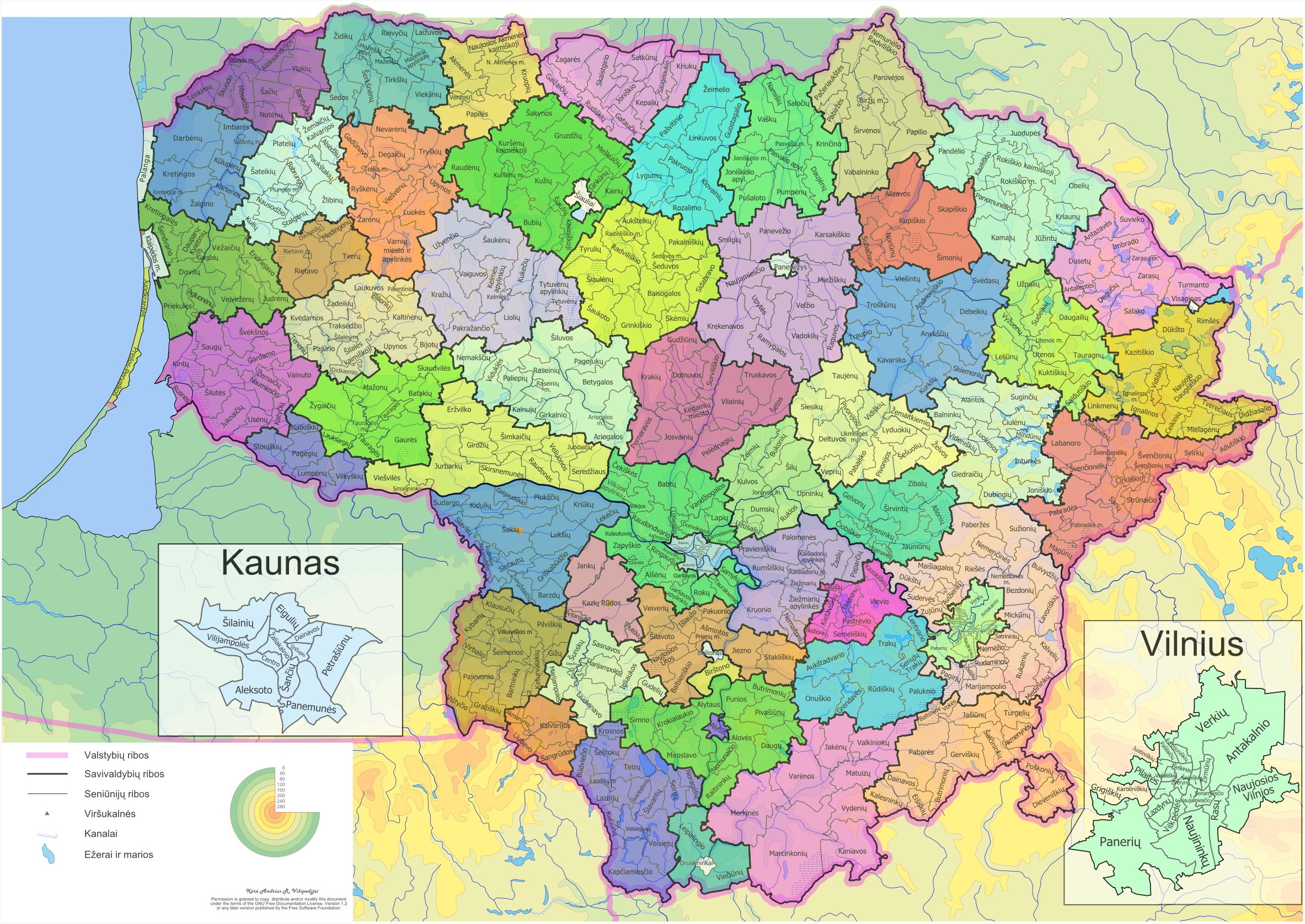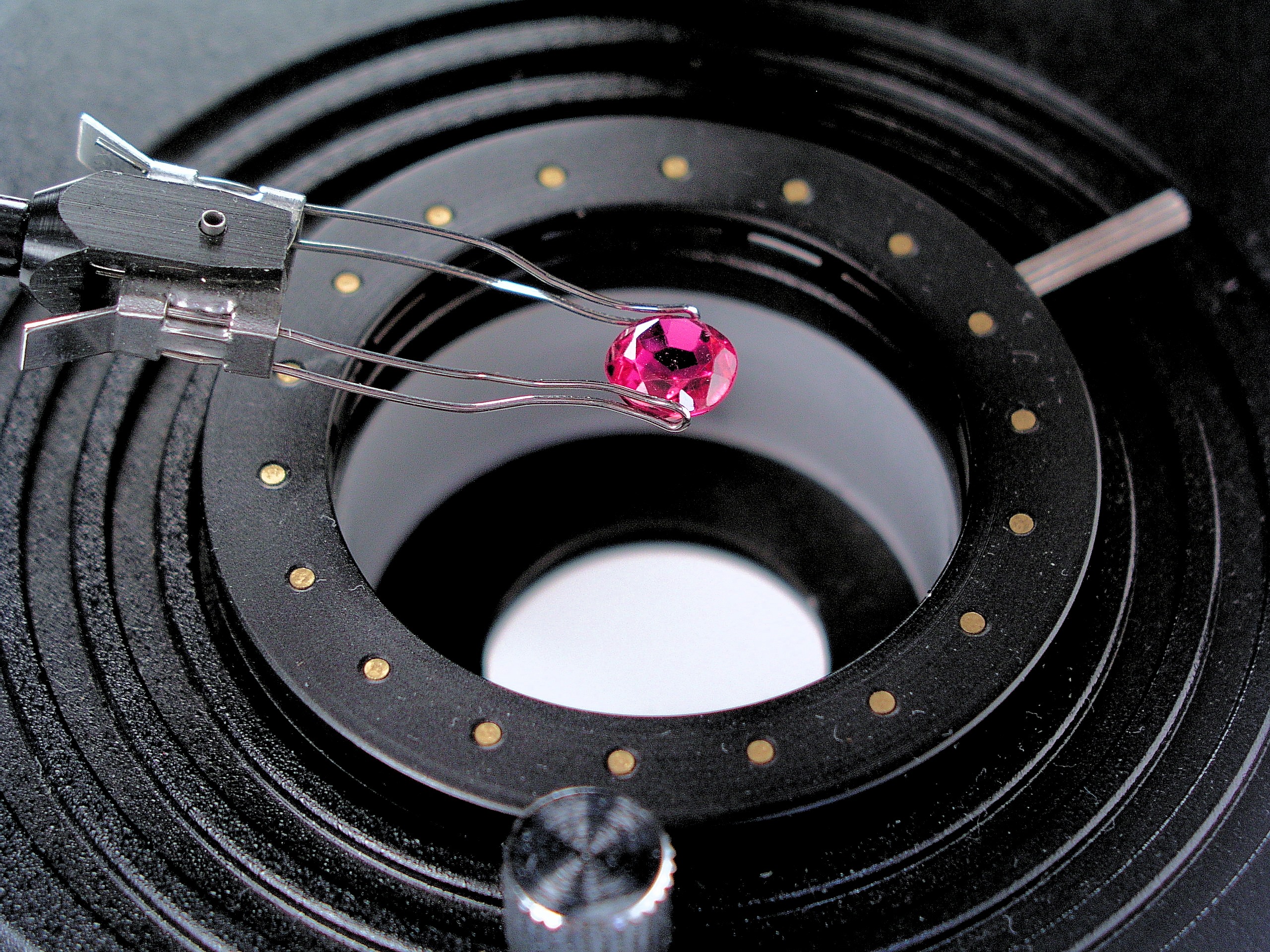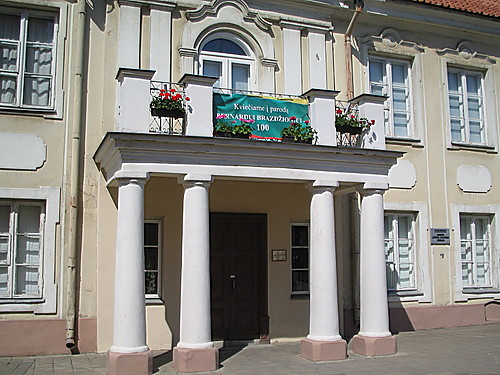|
Kaunas Old Town
The Centras eldership ( lt, Centro seniūnija) is an eldership in the city of Kaunas, Lithuania, based on two neighbourhoods of Kaunas - the Old City and the New City. It lies at the confluence of two major Lithuanian rivers, the Nemunas and the Neris. The borough borders Žaliakalnis in the north, Šančiai in the east, Aleksotas in the south and Vilijampolė in the west. Kaunas Old Town - the oldest part of Kaunas town, located to the east of the confluence of the Nemunas and Neris rivers, occupies 144 hectares. There are a lot of surviving Gothic, Renaissance and Baroque buildings, especially in the western part of the Old Town. Many notable buildings and facilities are located in the Old Town, such as the Kaunas Town Hall, the Kaunas Castle and the Historical Presidential Palace, House of Perkūnas, also the Kaunas Cathedral, the Church of St. Gertrude, Vytautas' church and many other churches. Great variety of museums, such as Museum of the History of Lithuanian Medicine ... [...More Info...] [...Related Items...] OR: [Wikipedia] [Google] [Baidu] |
Elderships Of Lithuania
A ''seniūnija'' (in English: eldership, elderate, ward, parish, or subdistrict) is the smallest administrative division of Lithuania. An eldership may comprise a very small region consisting of few villages, one single town, or a part of a big city. Elderships vary in size and population depending on their location and nature. A few elderships make up a municipality. Šilainiai (Kaunas) and Dainava (Kaunas) are the most populous elderates, with population counts over , exceeding the population of some entire municipalities. Elderships manage small-scale local matters, such as repairing pavements and dirt roads, and keep records on all families living in the eldership. The premise of the concept is that - unlike in higher administrative divisions - an elder (the leader of the eldership) could have time to talk to every person in the eldership who wants to. Modern Lithuania is divided into 10 counties, 60 municipalities, and 546 elderships. Elderships function as municip ... [...More Info...] [...Related Items...] OR: [Wikipedia] [Google] [Baidu] |
Baroque
The Baroque (, ; ) is a style of architecture, music, dance, painting, sculpture, poetry, and other arts that flourished in Europe from the early 17th century until the 1750s. In the territories of the Spanish and Portuguese empires including the Iberian Peninsula it continued, together with new styles, until the first decade of the 19th century. It followed Renaissance art and Mannerism and preceded the Rococo (in the past often referred to as "late Baroque") and Neoclassical styles. It was encouraged by the Catholic Church as a means to counter the simplicity and austerity of Protestant architecture, art, and music, though Lutheran Baroque art developed in parts of Europe as well. The Baroque style used contrast, movement, exuberant detail, deep colour, grandeur, and surprise to achieve a sense of awe. The style began at the start of the 17th century in Rome, then spread rapidly to France, northern Italy, Spain, and Portugal, then to Austria, southern Germany, and Russia. B ... [...More Info...] [...Related Items...] OR: [Wikipedia] [Google] [Baidu] |
Gemology
Gemology or gemmology is the science dealing with natural and artificial gemstone materials. It is a geoscience and a branch of mineralogy. Some jewelers (and many non-jewelers) are academically trained gemologists and are qualified to identify and evaluate gems. History Rudimentary education in gemology for jewellers and gemologists began in the nineteenth century, but the first qualifications were instigated after the National Association of Goldsmiths of Great Britain (NAG) set up a Gemmological Committee for this purpose in 1908. This committee matured into the Gemmological Association of Great Britain (also known as Gem-A), now an educational charity and accredited awarding body with its courses taught worldwide. The first US graduate of Gem-A's diploma course, in 1929, was Robert Shipley, who later established both the Gemological Institute of America and the American Gem Society. There are now several professional schools and associations of gemologists and certificatio ... [...More Info...] [...Related Items...] OR: [Wikipedia] [Google] [Baidu] |
Communication History Museum
Former Communications History Museum was a museum supported by Teo LT AB, former AB Lietuvos Telekomas, in the Old Town of Kaunas, Lithuania. The building is an old merchant house, where were storages for grain to be exported. The building was taken in the use of the communications from 1830s in a form of the horse post and an inn according to the project by Joseph Poussier. It was one of the largest post stations in Europe. In the end of the 19th century Kaunas City Museum was situated in the building too. After the Second World War the Soviet aviation unit took the building in its use. In the 1990s the buildings were handed to the Kaunas Association of Communications Companies and the reconstruction was made according to Saulė Mickevičienė's plan. The Communication History Museum opened it doors to the public in March 1994. A visitor himself may also test the operation of some old exhibits at the museum. Post The exhibitions starts with post history. Especial attention ... [...More Info...] [...Related Items...] OR: [Wikipedia] [Google] [Baidu] |
Lithuanian Literature
Lithuanian literature ( lt, lietuvių literatūra) concerns the art of written works created by Lithuanians throughout their history. History Latin language A wealth of Lithuanian literature was written in Latin, the main scholarly language in the Middle Ages. The edicts of the Lithuanian King Mindaugas are the prime example of literature of this kind. The Letters of Gediminas are another crucial heritage of the Lithuanian Latin writings. One of the first Lithuanian authors who wrote in Latin was Nicolaus Hussovianus (about 1480 – after 1533). His poem ''Carmen de statura, feritate ac venatione bisontis'' (''A Song about the Appearance, Savagery and Hunting of the Bison''), published in 1523, describes the Lithuanian landscape, way of life and customs, touches on existing political problems and reflects the clash of paganism and Christianity. Joannes Vislicensis (1485–1520) wrote a poem - monument ''Bellum Prutenum'' (''Prussian war'') dedicated to a Battle of Grunwald ag ... [...More Info...] [...Related Items...] OR: [Wikipedia] [Google] [Baidu] |
Maironis
Maironis (born Jonas Mačiulis, ; – 28 June 1932) was a Lithuanian Roman Catholic priest and the greatest and most-known Lithuanian poet, especially of the period of the Lithuanian press ban. He was called the Bard of Lithuanian National Revival (). Maironis was active in public life. However, the Lithuanian literary historian Juozas Brazaitis writes that Maironis was not. In his poetry, he expressed the national aspirations of the Lithuanian National Revival and was highly influential in Lithuanian society and poetry. The Maironian school in Lithuanian literature was named after him. Life Early years Jonas Mačiulis was born in manor, , , in Russian-occupied Lithuania on . Maironis' parents were free peasants who maintained close relations with the polonized Lithuanian nobility. Such a social environment formed the basis of Maironis' personality, leading to his deep religiosity and loyalty to tradition, free from atheistic or liberal influences. Socially, Maironis was u ... [...More Info...] [...Related Items...] OR: [Wikipedia] [Google] [Baidu] |
Povilas Stulga Museum Of Lithuanian Folk Instruments
The Povilas Stulga Museum of Lithuanian Folk Instruments ( lt, Povilo Stulgos lietuvių tautinės muzikos instrumentų muziejus) is located in the Old Town of Kaunas, Lithuania. Its permanent collection contains Lithuanian and international musical instruments, recordings, books, placards, photographs, and letters. Its musical instrument collection includes various versions of the kanklės, harmoniums, reeds, seven-string guitars, and a bass constructed using a table. The museum organizes exhibitions of national art, photography, folk art, domestic tools, musical instruments, and traditional clothing. It also hosts concerts and recitals and sponsors children's music lessons and excursions. See also * List of music museums This worldwide list of music museums encompasses past and present museums that focus on musicians, musical instruments or other musical subjects. Argentina * – Mina Clavero * Academia Nacional del Tango de la República Argentina – Buenos ... Refer ... [...More Info...] [...Related Items...] OR: [Wikipedia] [Google] [Baidu] |
Museum Of The History Of Lithuanian Medicine And Pharmacy
The Museum of the History of Lithuanian Medicine and Pharmacy ( lt, Lietuvos medicinos ir farmacijos istorijos muziejus ) is located in a restored 16th-century building at the Town Hall Square in the Old Town of Kaunas, Lithuania. It moved to its current location in 1987, although its history dates to 1936. Alfonsas Kaikaris (1922–1997), a professor of pharmacy, is credited as the founder of the museum; his personal collection formed the basis of its holdings. The Lithuanian Pharmacists' Union worked to collect materials as well. It is sponsored by Kaunas University of Medicine. The museum's permanent collection consists of the belongings of Lithuanian doctors, pharmacists and hospitals, along with medical and pharmaceutical implements and documents. Temporary exhibitions commemorate prominent doctors' and pharmacists' anniversaries. The exhibits include dental equipment along with displays of archaic medications such as “Erektosan” (an herbal version of Viagra), love ... [...More Info...] [...Related Items...] OR: [Wikipedia] [Google] [Baidu] |
Vytautas' The Great Church
Church of Vytautas the Great or the Church of the Assumption of the Blessed Virgin Mary ( lt, Vytauto Didžiojo bažnyčia) is a Roman Catholic church in the Old Town of Kaunas, Lithuania, and is one of the oldest churches in the city and an important example of Gothic architecture in Lithuania. History The church was built on the north bank of the Neman River around 1400 for Franciscan friars and foreign merchants. It was ordered and funded by Vytautas the Great as a commendation to the Blessed Virgin Mary for saving his life after a major defeat in the Battle of the Vorskla River. Being quite close to the river the church has suffered many times from spring floods. In 1812 it was burned by French troops. The Franciscan friary was closed by Russian administration after the November Uprising. In 1845, the Catholic church was closed and later was rebuilt and reopened as an Orthodox church. From 1903 it served as military barracks. In 1915 Germans organised a warehouse here ... [...More Info...] [...Related Items...] OR: [Wikipedia] [Google] [Baidu] |
Church Of St
Church may refer to: Religion * Church (building), a building for Christian religious activities * Church (congregation), a local congregation of a Christian denomination * Church service, a formalized period of Christian communal worship * Christian denomination, a Christian organization with distinct doctrine and practice * Christian Church, either the collective body of all Christian believers, or early Christianity Places United Kingdom * Church (Liverpool ward), a Liverpool City Council ward * Church (Reading ward), a Reading Borough Council ward * Church (Sefton ward), a Metropolitan Borough of Sefton ward * Church, Lancashire, England United States * Church, Iowa, an unincorporated community * Church Lake, a lake in Minnesota Arts, entertainment, and media * '' Church magazine'', a pastoral theology magazine published by the National Pastoral Life Center Fictional entities * Church (''Red vs. Blue''), a fictional character in the video web series ''Red vs. Blue'' ... [...More Info...] [...Related Items...] OR: [Wikipedia] [Google] [Baidu] |
Kaunas Cathedral
Cathedral Basilica of apostles St. Peter and St. Paul of Kaunas ( lt, Kauno Šv. apaštalų Petro ir Povilo katedra bazilika) is a Roman Catholic cathedral basilica in Kaunas, Lithuania. History The exact date when the first Gothic style church dedicated to apostles Saint Peter and Saint Paul, was built is unknown, but it was first mentioned in written sources in 1413. The first parochial school in Kaunas at the St. Peter and St. Paul church was mentioned in 1473. The construction works were concluded only in 1624. The church greatly suffered from the 1655 military campaign and was rebuilt in 1671, gaining some Renaissance features. Only one of the towers was rebuilt after the fire of the roof in 1732. As a part of renovation, the internal decorations were funded by the King Stanisław August Poniatowski in 1771. The main altar, a lectern and a choir were installed by Tomasz Podhajski in 1775. The present-day shape of the building results from a further renovation in 1 ... [...More Info...] [...Related Items...] OR: [Wikipedia] [Google] [Baidu] |
House Of Perkūnas
The House of Perkūnas is one of the most original and Gothic secular buildings, located in the Old Town of Kaunas, Lithuania. Originally built by Hanseatic merchants and served as their office from 1440 until 1532, it was sold in the 16th century to the Jesuits who had established a chapel there in 1643. The Jesuits have also completed the Church of St. Francis Xavier at the Town Hall Square in 1722. The ruined house was rebuilt in the 19th century and served as a school and theatre, which was attended by Polish-Lithuanian poet Adam Mickiewicz. At the end of the 19th century it was renamed the "House of Perkūnas", when a figure, interpreted by the romantic historians of that time as an idol of the Baltic pagan god of thunder and the sky Perkūnas was found in one of its walls. Today, the house of Perkūnas once again belongs to the Jesuits and houses a museum of Adam Mickiewicz. Lithuanian historian, theologian and translator Albert Wijuk Kojałowicz was born in the house ... [...More Info...] [...Related Items...] OR: [Wikipedia] [Google] [Baidu] |






